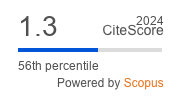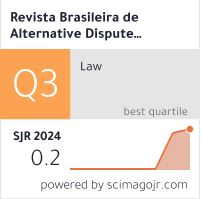International Criminal Law and its Contribution to Human Rights Safeguards
Beyond Borders Defending the Defenseless
DOI:
https://doi.org/10.52028/rbadr.v7.i13.ART11.INPalavras-chave:
Direitos Humanos, Crimes de Guerra, Humanidade, TPI, Cenários JurídicosResumo
Responsabilizar pessoas e exigir compensação de países é necessário para proteger os direitos humanos. Ferramentas do direito penal internacional, como o Veredito de Nuremberg do Tribunal Militar Internacional (TMI) e a Carta, protegem vários direitos estabelecidos na Declaração Universal dos Direitos Humanos. As Convenções de Genebra de 1949 expandiram o escopo do princípio da universalidade para incluir crimes de guerra, e os direitos protegidos pelos inúmeros pactos de direitos humanos estão alinhados com as graves violações específicas. O direito penal internacional é, essencialmente, um complemento aos direitos humanos, atuando como um meio de aplicação para determinar a responsabilidade pessoal e punir os indivíduos que infringem esses direitos. A legislação de direitos humanos e o subsequente arcabouço legal para a defesa dos direitos dos acusados clarificam como os direitos humanos são protegidos nos tribunais penais internacionais bem como aponta certos obstáculos que podem violar os direitos individuais e colocar em risco a ideia central de um “julgamento justo”. O artigo discute a ampliação da noção de julgamento justo para os processos criminais internacionais. Além disso, sugere possíveis maneiras de superar esses problemas dentro do sistema de justiça penal internacional e explora as conexões entre os tribunais penais internacionais e os sistemas de monitoramento de direitos humanos, analisando os potenciais efeitos sobre os direitos individuais dos aspectos acusatórios e inquisitoriais do processo penal internacional.
Referências
Altunjan, T. (2021). The International Criminal Court and sexual violence: Between aspirations and reality. German Law Journal, 22(5), 878-893.
Altunjan, T. (2021). Reproductive violence and international criminal law. TMC Asser Press.
Benyera, E. (2024). Child victim, loyal war spirit medium or war criminal: shifting the geography and logic of historical accountability in Dominic Ongwen’s ICC trial. African Identities, 22(1), 197-212.
Beresford, A., & Wand, D. (2020). Understanding bricolage in norm development: South Africa, the International Criminal Court, and the contested politics of transitional justice. Review of International Studies, 46(4), 534-554.
Bergsmo, M. (Ed.). (2021). Human rights and criminal justice for the downtrodden: essays in honour of Asbjørn Eide. Brill.
Bondarchuk, N. (2024). Environmental rights protection in Ukraine: a call for reform and learning from the EU and Romania experience. Scientific Collection «InterConf», (187), 146-152.
Cliquennois, G., & Snacken, S. (2024). The Ability of Human Rights to Limit the State’s Power to Punish in Europe: Connecting Prison and Mental Health Policies through the Concept of “Transpolicies”. Law & Social Inquiry, 1-25.
Costello, C., & Mann, I. (2020). Border justice: migration and accountability for human rights violations. German Law Journal, 21(3), 311-334.
D’Alessandra, F., & Sutherland, K. (2021). The promise and challenges of new actors and new technologies in international justice. Journal of International Criminal Justice, 19(1), 9-34.
Greenawalt, A. K. (2021). What is an international crime? Gupta, A., Biermann, F., van Driel, E., Bernaz, N., Jayaram, D., Kim, R. E., ... & Wewerinke-Singh, M. (2024). Towards a Non-Use Regime on Solar Geoengineering: Lessons from International Law
and Governance. Transnational Environmental Law, 1-32.
Gutiérrez Gallo, C. (2023). The Principle of Positive Complementarity In International Criminal Law And Its Convergence With Domestic Transitional Systems: The Case Of Colombia.
Hasan, A., & Buheji, M. (2024). A World Losing Its Legitimacy-Gaza from Collective Punish till Ethnic Cleansing & Genocide. International Journal of Management (IJM), 15(1), 2024.
Hussain, N., Khan, A., & Chandio, L. A. (2023). Legal Safeguards against Mob Justice: An Analysis of Blasphemy Laws in Pakistan and International Human Rights Norms. Al-Qamar, 13-26.
Jalloh, C. C. (2020). The International Law Commission’s First Draft Convention on Crimes Against Humanity: Codification, Progressive Development, or Both? Case W. Res. J. Int’l L., 52, 331.
Jessberger, F., & Geneuss, J. (Eds.). (2020). Why punish perpetrators of mass atrocities?: purposes of punishment in international criminal law. Cambridge University Press.
Jessberger, F., Meloni, C., & Crippa, M. (Eds.). (2023). Domesticating International Criminal Law: Reflections on the Italian and German Experiences. Taylor & Francis.
Kalpouzos, I. (2020). International criminal law and the violence against migrants. German Law Journal, 21(3), 571-597.
Kilonzo, J. M. (2024). The potential for rights-based third-generation disarmament, demobilisation and reintegration programmes in Cabo Delgado. Mozambique’s Cabo Delgado Conflict: International Humanitarian Law and Regional Security.
Koh, N. S., Ituarte-Lima, C., & Hahn, T. (2022). Mind the compliance gap: how insights from international human rights mechanisms can help to implement the convention on biological diversity. Transnational Environmental Law, 11(1), 39-67.
Leslie, D., Burr, C., Aitken, M., Cowls, J., Katell, M., & Briggs, M. (2021). Artificial intelligence, human rights, democracy, and the rule of law: a primer. arXiv preprint arXiv:2104.04147.
Ligthart, S., Douglas, T., Bublitz, C., Kooijmans, T., & Meynen, G. (2021). Forensic brain-reading and mental privacy in European Human Rights Law: Foundations and challenges. Neuroethics, 14, 191-203.
Machado, H., Neiva, L., Granja, R., & Silva, S. (2024). Ethical, legal, and social challenges of next-generation sequencing technologies (NGS) in forensic criminal identification. In Next Generation Sequencing (NGS) Technology in DNA Analysis (pp. 551-569). Academic Press.
Mammadli, I. (2023). International Organisations and Accountability for Human Rights Abuses: Obstacles Caused by Jurisdictional Immunity. Baku St. UL Rev., 9, 66.
Mantouvalou, V. (2024). Advancing human rights, capabilities and non-domination at work. Oxford University Press (OUP).
May, R., & Wierda, M. (2021). International criminal evidence (Vol. 9). Brill.
McDonald, G. K., & Swaak-Goldman, O. (Eds.). (2022). Substantive and Procedural Aspects of International Criminal Law: Documents and Cases (Volume II). Brill.
Mégret, F. (2023). Immunities of Foreign Officials for International Crimes: The Dilemmas of Strategic Litigation. Journal of Human Rights Practice, 15(1), 66-83.
Mettraux, G. (2020). International Crimes: Law and Practice: Volume II: Crimes Against Humanity. Oxford University Press.
Minha, D. (2020). The Possibility of Prosecuting Corporations for Climate Crimes Before the International Criminal Court: All Roads Lead to the Rome Statute? Mich. J. Int’l L., 41, 491.
Montasari, R. (2024). The Impact of Facial Recognition Technology on the Fundamental Right to Privacy and Associated Recommendations. In Cyberspace, Cyberterrorism and the International Security in the Fourth Industrial Revolution: Threats, Assessment and Responses (pp. 259-270). Cham: Springer International Publishing.
Nugroho, C. (2024). Responsibilities of the Government of Indonesia Regarding Human Rights Enforcement in the Perspective of International Law (Study of Cases of Armed Criminal Groups (KKB) in Papua). PROIROFONIC, 1(1), 31-41.
Ogbe, R. S. (2023). The Criminalization of the Violation of International Human Rights. RUNJJIL, 3, 1.
Palmer, E. (2020). Adapting International Criminal Justice in Southeast Asia: Beyond the International Criminal Court. Cambridge University Press.
Pereira, R. (2020, June). After the ICC Office of the Prosecutor’s 2016 Policy Paper on Case Selection and Prioritisation: Towards an International Crime of Ecocide? In Criminal Law Forum (Vol. 31, pp. 179-224). Springer Netherlands.
Pinto, M. (2020). Historical trends of human rights gone criminal. Hum. Rts. Q., 42, 729.
Pons, W. I., Lord, J. E., & Stein, M. A. (2022). Disability, human rights violations, and crimes against humanity. American Journal of International Law, 116(1), 58-95.
Prakasa, S. U. W. (2021). Ecocide crimes & omnibus law: Review of international law and its implications on indonesia law. Dinamika Hak Asasi Manusia, 12(2), 14-20.
Purshouse, J. (2020). ‘Paedophile hunters’, criminal procedure, and fundamental human rights. Journal of Law and Society, 47(3), 384-411.
Robinson, D. (2020). Justice in Extreme Cases: Criminal Law Theory Meets International Criminal Law. Cambridge University Press.
Sassòli, M. (2024). IHL and other branches of international law. In International Humanitarian Law (pp. 458-527). Edward Elgar Publishing.
Sassòli, M. (2024). International humanitarian law: Rules, controversies, and solutions to problems arising in warfare. Edward Elgar Publishing.
Schilling-Vacaflor, A., & Gustafsson, M. T. (2024). Integrating human rights in the sustainability governance of global supply chains: Exploring the deforestation-land tenure nexus. Environmental Science & Policy, 154, 103690.
Schwöbel-Patel, C. (2021). Marketing global justice: The political economy of international criminal law. Cambridge University Press.
Segate, R. V. (2021). Cognitive bias, privacy rights, and digital evidence in international criminal proceedings: Demystifying the double-edged al revolution. International Criminal Law Review, 21(2), 242-279.
Shelton, D. (2021). International crimes, peace, and human rights: the role of the International Criminal Court. BRILL.
Shepitko, V. Y., & Shepitko, M. V. (2021). The role of forensic science and forensic examination in international cooperation in the investigation of crimes. Journal of the National Academy of Legal Sciences of Ukraine, 28(1), 179-186.
Singh, B. (2019). Profiling Public Healthcare: A Comparative Analysis Based on the Multidimensional Healthcare Management and Legal Approach. Indian Journal of Health and Medical Law, 2(2), 1-5.
Singh, B., & Kaunert, C. (2024). Integration of Cutting-Edge Technologies such as Internet of Things (IoT) and 5G in Health Monitoring Systems: A Comprehensive Legal Analysis and Futuristic Outcomes. GLS Law Journal, 6(1), 13-20.
Smith, R. K. (2022). International human rights law. Oxford University Press.
Sosa, L. (2021). Beyond gender equality? Anti-gender campaigns and the erosion of human rights and democracy. Netherlands Quarterly of Human Rights, 39(1), 3-10.
Sosnowski, M., & Klem, B. (2024). Legal identity in a looking-glass world: documenting citizens of aspirant states. Citizenship Studies, 1-18.
Sun, N., Esom, K., Dhaliwal, M., & Amon, J. J. (2020). Human rights and digital health technologies. Health and Human Rights, 22(2), 21.
Tsilonis, V. (2024). The Definition of International Crime. In The Jurisdiction of the International Criminal Court (pp. 1-30). Cham: Springer International Publishing.
Vadi, V. (2024). Gravity and Grace: Sustainable Development, Foreign Investments and Cultural Heritage in International Investment Law. In Cultural Heritage, Sustainable Development and Human Rights (pp. 360-381). Routledge.
Zarmsky, S. (2021). Why seeing should not always be believing: Considerations regarding the use of digital reconstruction technology in international law. Journal of International Criminal Justice, 19(1), 213-225.
Downloads
Publicado
Edição
Seção
Licença
Copyright (c) 2025 REVISTA BRASILEIRA DE ALTERNATIVE DISPUTE RESOLUTION

Este trabalho está licenciado sob uma licença Creative Commons Attribution 4.0 International License.
Não serão devidos direitos autorais ou qualquer outra remuneração pela publicação dos trabalhos.
As opiniões emitidas pelos autores dos artigos e resenhas são de sua exclusiva responsabilidade.







